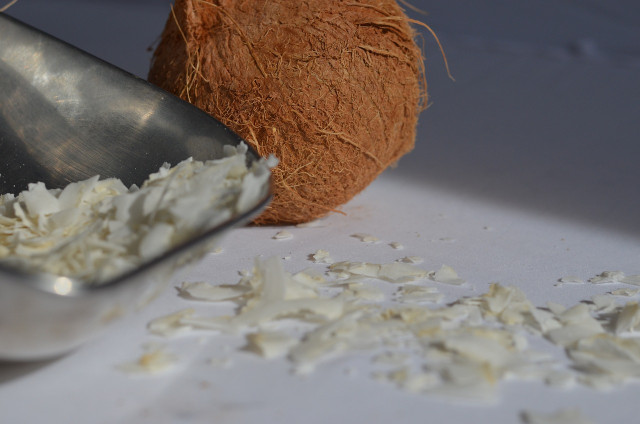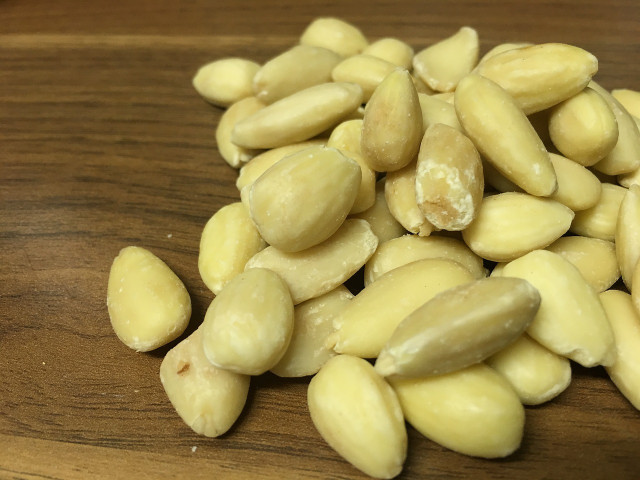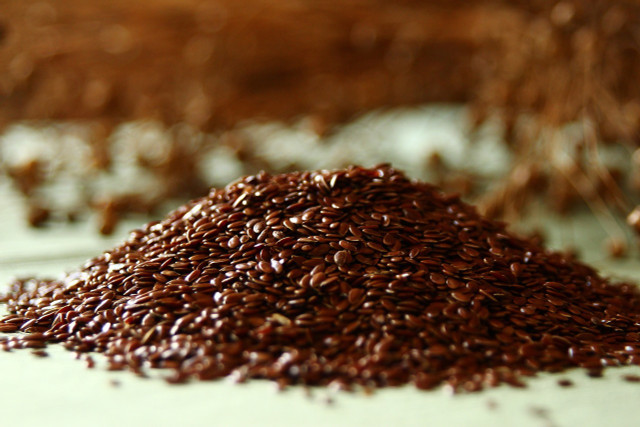If your recipe calls for almond meal but you are struggling to find it (or it’s outside your budget), never fear. We have nine almond meal substitutes for any recipe.
Almond meal is made from ground almonds, with a texture similar to fine breadcrumbs. It has a speckled white and brown color, as the almonds are ground with the skins intact, making it high in fiber, vitamins, and minerals. It can be used in a variety of ways such as in fruit crumbles or homemade crackers, to top salads, or as a breadcrumb alternative for those with gluten allergies.
It is possible to make almond meal at home, but it’s little time-consuming. It can also be tricky to find in health food stores or online — don’t confuse it with almond flour, which is easier to find but different in consistency. However, there are a variety of almond meal substitutes out there for any recipe: try one of these nine swaps.
1. Use Coconut Flour for Baking

(Foto: CC0 / Pixabay / mrsdavir)
A good almond meal alternative for those with gluten allergies, the taste of coconut flour is sweeter than almond meal and it also tends to absorb more liquid than almond meal does, so you need to make adjustment. Ideal for baking, coconut flour can be used in cakes, cookies, pancakes, and brownies. Simply use one cup of coconut flour for every three cups of almond meal. If you need to add more moisture, add extra egg, vegan egg substitute, coconut milk, vegetable oil, apple sauce or mashed banana.
Coconut flour is made from dried coconut pulp, which is a byproduct of coconut milk production. Coconut trees themselves are a relatively sustainable crop, as they grow well with other plants, don’t decrease soil fertility or quality, and consume a relatively low amount of water. However, as coconuts grow in warm climates, you should consider their carbon footprint. In the US, coconuts only grow in Hawaii and Florida, so it’s likely that coconut products are imported. When choosing coconut flour, opt for organic products when possible, such as Panhandle Milling Organic Coconut Flour (available on Amazon**).
2. All-Purpose Flour Is Great for Cakes



(Foto: CC0 / Pixabay / u_ozasl6z8zh)
An easy substitute to get your hands on, all-purpose or plain flour is a good almond meal substitute for cakes and sweet recipes, but will not work well for pies or meatballs and is not gluten-free. Use the same amount of plain flour as you would almond meal. If the mixture is then too dry, try using 20% less flour.
All-purpose flour is typically not sustainable due to the use of pesticides and artificial fertilizers used in the wheat production processs. Go for organic all-purpose flour from the US, such as Bob’s Red Mill Organic Unbleached White All-Purpose Flour (available on Amazon**). Learn more about whether flour is vegan and some tips for cruelty-free baking.
3. Wheat Flour as an Almond Meal Substitute



(Foto: CC0 / Pixabay / ha11ok)
Wheat flour is different from all-purpose flour because it is made from whole wheat kernels, so it’s browner in color and contains more protein. You can use half a cup of wheat flour for every cup of almond meal. Alternatively, replace one cup of almond meal for half a cup of wheat flour mixed with half a cup of all-purpose flour. Wheat flour assists in making cakes dense.
Like regular all-purpose flour, non-organic wheat flour is also usually not sustainable. The alternative is to go for organic wheat flour from the US, such as Arrowhead Mills Organic Stone Ground Whole Wheat Flour (available on Amazon**). Learn more about what the most sustainable wheat type growing in the US is.
4. Sub Almond Flour for Almond Meal



(Foto: CC0 / Pixabay / Wissensbooster)
Not to be confused with almond meal, almond flour is made when the skin is removed from the almonds before grinding. Its fiber content is, therefore, lower than almond meal, but it is easier to find in the store or online. One cup of almond flour can be substituted for one cup of almond meal. It provides a light and moist substitute for cakes and baking.
Almond production requires lot of of water and artificial pesticides are often used, so it’s better to buy organic, locally-produced almond flour such as Anthony’s Organic Blanched Almond Flour, (available on Amazon**) but also to limit our consumption of almonds in general. Find out more about the benefits and drawbacks of eating almonds for you and the planet and how to peel (blanch) almonds easily.
5. Oat Flour Is Perfect for Baking



(Foto: CC0 / Pixabay / fotoblend)
Oat flour is made when rolled oats are ground to make a fine powder. The resulting texture is similar to that of almond meal — it’s a little gritty, but the flavor is slightly nuttier. Oats are a good source of fiber and are suitable for those with nut allergies, but not those with gluten allergies. Using oat flour in baking gives cakes moisture and lightness. Simply use one cup of oat flour for every cup of almond meal. Oats aren’t as fatty as almonds, so you may want to add some extra butter or oil.
Oats have a fairly low carbon footprint at 2.5kg of carbon per kg of oats grown. They can also be sown in between the harvests for other crops, which helps replenish the soil and maintain its quality. There are a range of organic oat flours available, such as Arrowhead Mills Organic Oat Flour (available on Amazon**). Learn more about where oats come from and whether they’re sustainable.
6. Sunflower Seed Flour Is a High-Fiber Almond Meal Substitute



(Foto: CC0 / Pixabay / nonnatthapat)
Nutritionally similar to almonds, sunflower seeds are low in carbohydrates, high in fiber and protein, and gluten-free. The taste of sunflower seed flour is less nutty than almond meal, but it doesn’t stand out too much when baked. Use one cup of sunflower seed flour for every cup of almond meal. It works best in savory dishes but can be used in baking too. Care should be taken as baking with sunflower seed flour can make the final product turn green. To prevent this, use baking powder instead of baking soda or add a drop of acid, such as lemon juice or vinegar. Baking time may need to be extended by a few minutes to account for the higher moisture content of sunflower seed flour.
Sunflower seeds are considered sustainable as they require little to no irrigation, little fertilizer, and few pesticides. As always it is best to choose locally-produced products, such as Think Eat Live Sunflower Seed Flour (available on Amazon**), which is made in the USA. Check out how to grow sunflowers and harvest sunflower seeds.
7. Macadamia Flour Is a Sustainable Alternative



(Foto: CC0 / Pixabay / sunnysun0804)
The texture of macadamia flour is similar to that of almond meal, but the flavor is very different. The nutritional content is also different — macadamia flour is higher in fat but lower in carbohydrates than almond meal. Use one cup of macadamia flour for every cup of almond meal.
The macadamia nut comes from a hardy tree that can survive drought conditions and improve soil moisture content. It grows in tropical climates so commercial crops need a good amount of rainfall. A 2021 study found that macadamia farming will be more profitable in the future than farming current cash crops like coffee and bananas, due to the macadamia tree’s resilience to future changes in climate. In the US, macadamia trees grow in Hawaii, Florida, and California. It is, therefore, best to buy locally-produced macadamia flour to reduce our carbon footprint, and to buy organic if possible. Macadamia flour can be hard to find in the store and online so you can make it yourself by blitzing macadamia nuts in the blender.
8. Polenta Works for Savory Dishes



(Foto: CC0 / Pixabay / Efraimstochter)
Polenta or cornmeal is made from coarsely ground corn and can be used as an almond meal substitute in dishes such as casseroles where it is used as a topping. Simply replace one cup of almond meal with a cup of polenta. It can also be used for baking, but works better if half a cup is mixed with half a cup of almond flour to make the texture softer and denser.
Polenta is somewhat unsustainable due to the way corn is grown and harvested. A 2019 study found that the use of pesticides, fertilizers, and gas, as well as the creation of dust from processing, all contribute to air pollution on a state level. It is therefore essential to buy local, organic polenta such as Food to Live Organic Polenta (available on Amazon**).
9. Flaxseed Meal Is a Protein-Rich Almond Meal Substitute



(Foto: CC0 / Pixabay / alexdante)
Flaxseed or linseed meal is full of fiber and protein and is low in carbohydrates. It’s also gluten-free and has a light texture and nutty taste. One cup of flaxseed meal can be used for each cup of almond meal. However, similar to coconut flour, flaxseed meal absorbs a lot of moisture, so you need to balance it out with extra liquid such as vegetable oil or coconut milk when baking bread or cakes. It can also be used in smoothies and shakes as a thickener.
Flaxseed has quite a high environmental impact, according to a 2018 study, due to the level of artificial pesticides and water pollution causing eutrophication and acid rain. It is therefore essential to buy organic, locally-produced flaxseed meal, for example, 365 Whole Foods Market Organic Ground Flaxseed (available on Amazon**).
Read more:
- 5 Low Carb Flours for Every Recipe
- What Is Spelt Flour – and Why Should You Try It?
- How to Make Chickpea Flour: Homemade Recipe
Do you like this post?






